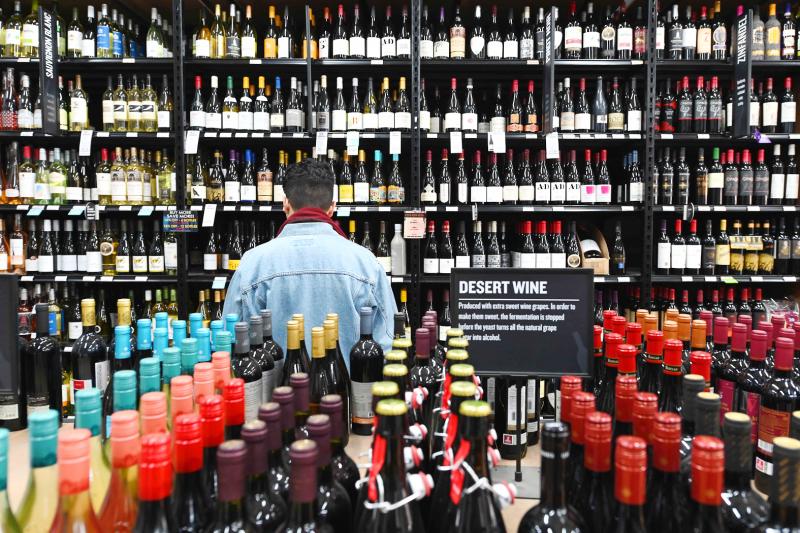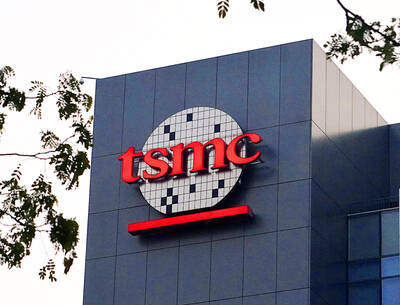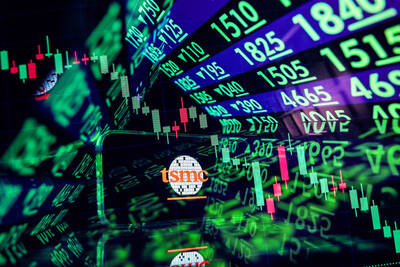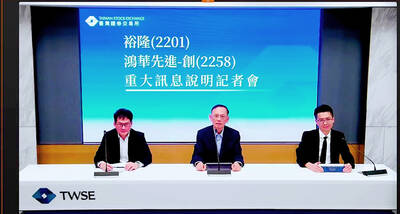Your favorite restaurants and bars might be closed, but online wine buying is booming — and already was before the COVID-19 pandemic.
A January report from Cooperatieve Rabobank UA, a global food and agribusiness bank, estimated that US online sales of wine last year reached US$2.6 billion, growing 22 percent year on year.
At the annual Impact Marketing Seminar, Rich Bergsund, CEO of giant online retailer Wine.com, said that the site pulled in US$150 million in revenue last year.

Photo: AFP
“No matter what happens, wine consumers won’t abstain,” Silicon Valley Bank Wine Division senior vice president Rob McMillan wrote in a blogpost.
He predicted even higher wine sales are coming.
Gary Fisch, CEO and owner of Gary’s Wine & Marketplace in New Jersey, can attest to that.
In an e-mail, he said that sales in the week ending March 15 went up 62 percent, adding that he also saw a 300 percent increase in local delivery and pickup orders.
And every bottle counts.
During “social distancing,” popping a cork while viewing the free operas the Metropolitan Opera is streaming or gathering for a glass with friends over video chat virtual happy hour helps people in the industry keep going, whether it is a small producer in Sonoma, California, France or Italy; a retailer; or a slew of workers at a huge company such as LVMH Moet Hennessy-Louis Vuitton SE.
Winery shipments to consumers now account for nearly 11 percent of the value of all wine retail sales, according to the latest Sovos report, a collaboration between Sovos ShipCompliant and Wines Vines Analytics.
Many are wines for members of wineries’ clubs, which are easy to join.
Since the closing of California’s tasting rooms, more of them are becoming extra creative.
Chanel SA-owned St Supery in Napa is holding online tastings once a week, on Thursdays. You order a six-pack tasting kit, called Injoy@Home, then tune in to taste one each week with the winemaker on Zoom.
Sonoma’s Inman Family Wines just launched a “Meet the Maker” happy hour via Facebook video chat, which you can access after purchasing three-bottle tasting packages.
This week, Kendall-Jackson hosted virtual tastings with winemaker Randy Ullom, plus a 20 percent discount for online wine orders.
Think of Drizly as the Amazon Marketplace of wine. Founded in 2012, it is a delivery service platform that contracts with top local wine stores in 180 locations across the US and Canada, allowing you to shop for wine, beer and spirits on its Web site and delivering your picks in about an hour.
As of March 16, Drizly’s gross merchandise volume was up 500 percent year on year, CEO Cory Rellas said, adding that in the three days leading up to March 16, that figure grew at five times the rate from earlier this year.
People are now spending 50 percent more than normal, he said.
About 31,000 different wines are available overall, but your choices are limited to your local retailers’ inventories. For example, among those for New York’s Chelsea district you will find 547 cabernets and 313 pinot noirs.
Similar to Drizly, but smaller, Minibar Delivery also partners with local stores. It has seen a huge spike in orders, with those on March 12 80 percent higher than on the previous Thursday.
The biggest online auction house is online-only WineBid, with a 25-year history and global reach to Europe and Asia.
“We are still seeing consistent demand. Buying and selling fine wine goes on,” CEO Russ Mann said.
Of more than 100,000 registered members, half use WineBid’s mobile phone app. You can find a much wider diversity of brands and prices than at major auction houses, with single bottles as low as US$10, although the average is about US$100.
Due to its Asian buyers, Mann became aware of the coronavirus situation in China and ramped up new sanitation protocols weeks ago, making sure that workers wear gloves and wipe down bottles with anti-septic wipes.
Most wine drinkers know Wine.com, the reliable online US leader that is growing 15 to 20 percent each year. The site sold more than 40,000 different wines last year. It resembles a huge wine warehouse at which you need to know what you like and want. Often, prices are lower than elsewhere — but not always.
Unlike Wine.com, WineAccess.com — which last year grew its business 244 percent — is more like a curated wine club, with a much smaller selection approved by a collective team that tastes every bottle. You can first growths, Dom Perignon-level bubbly, first releases of collectibles and scarce, unusual labels.
A Facebook group was last week scheduled to go live to connect members with the wine team for advice and questions.
As liquor laws relax across the US, expect innovative restaurants and wine bars to step up delivery and tweak their business models to survive.
For example, in New York a change on Tuesday last week permits bars and restaurants to sell and deliver alcohol along with takeout food.
Finally, if you want to load up on great wine all in one go, do not forget Sotheby’s Instant Wine Cellars. With one click and US$5,000, you will get 50 bottles of wine within 24 hours.
They are all ways to stay close to home and still raise a glass.

Taiwan’s long-term economic competitiveness will hinge not only on national champions like Taiwan Semiconductor Manufacturing Co. (TSMC, 台積電) but also on the widespread adoption of artificial intelligence (AI) and other emerging technologies, a US-based scholar has said. At a lecture in Taipei on Tuesday, Jeffrey Ding, assistant professor of political science at the George Washington University and author of "Technology and the Rise of Great Powers," argued that historical experience shows that general-purpose technologies (GPTs) — such as electricity, computers and now AI — shape long-term economic advantages through their diffusion across the broader economy. "What really matters is not who pioneers

In a high-security Shenzhen laboratory, Chinese scientists have built what Washington has spent years trying to prevent: a prototype of a machine capable of producing the cutting-edge semiconductor chips that power artificial intelligence (AI), smartphones and weapons central to Western military dominance, Reuters has learned. Completed early this year and undergoing testing, the prototype fills nearly an entire factory floor. It was built by a team of former engineers from Dutch semiconductor giant ASML who reverse-engineered the company’s extreme ultraviolet lithography (EUV) machines, according to two people with knowledge of the project. EUV machines sit at the heart of a technological Cold

Taiwan Semiconductor Manufacturing Co (TSMC, 台積電) last week recorded an increase in the number of shareholders to the highest in almost eight months, despite its share price falling 3.38 percent from the previous week, Taiwan Stock Exchange data released on Saturday showed. As of Friday, TSMC had 1.88 million shareholders, the most since the week of April 25 and an increase of 31,870 from the previous week, the data showed. The number of shareholders jumped despite a drop of NT$50 (US$1.59), or 3.38 percent, in TSMC’s share price from a week earlier to NT$1,430, as investors took profits from their earlier gains

TAIWAN VALUE CHAIN: Foxtron is to fully own Luxgen following the transaction and it plans to launch a new electric model, the Foxtron Bria, in Taiwan next year Yulon Motor Co (裕隆汽車) yesterday said that its board of directors approved the disposal of its electric vehicle (EV) unit, Luxgen Motor Co (納智捷汽車), to Foxtron Vehicle Technologies Co (鴻華先進) for NT$787.6 million (US$24.98 million). Foxtron, a half-half joint venture between Yulon affiliate Hua-Chuang Automobile Information Technical Center Co (華創車電) and Hon Hai Precision Industry Co (鴻海精密), expects to wrap up the deal in the first quarter of next year. Foxtron would fully own Luxgen following the transaction, including five car distributing companies, outlets and all employees. The deal is subject to the approval of the Fair Trade Commission, Foxtron said. “Foxtron will be